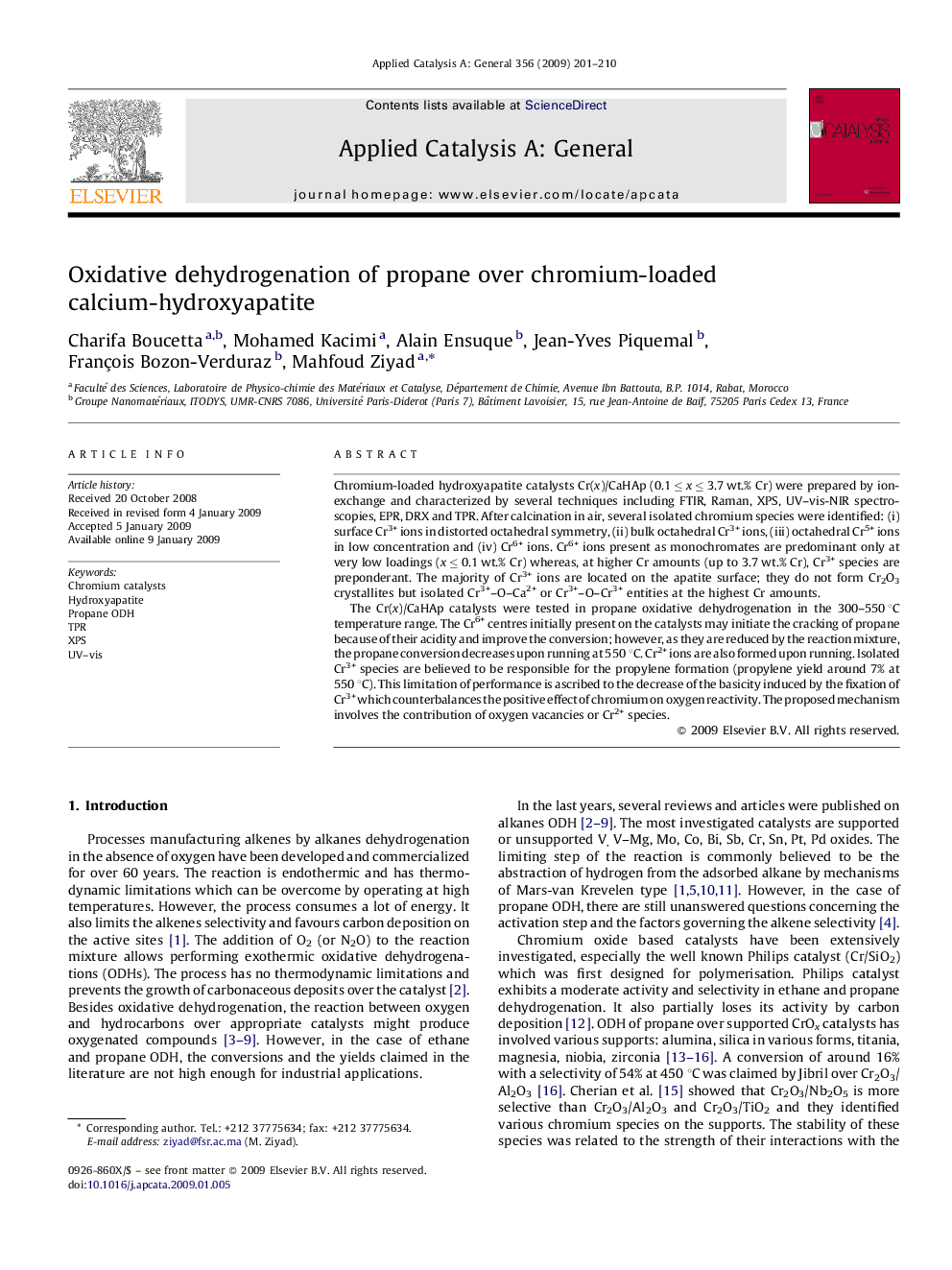| کد مقاله | کد نشریه | سال انتشار | مقاله انگلیسی | نسخه تمام متن |
|---|---|---|---|---|
| 42549 | 45930 | 2009 | 10 صفحه PDF | دانلود رایگان |

Chromium-loaded hydroxyapatite catalysts Cr(x)/CaHAp (0.1 ≤ x ≤ 3.7 wt.% Cr) were prepared by ion-exchange and characterized by several techniques including FTIR, Raman, XPS, UV–vis-NIR spectroscopies, EPR, DRX and TPR. After calcination in air, several isolated chromium species were identified: (i) surface Cr3+ ions in distorted octahedral symmetry, (ii) bulk octahedral Cr3+ ions, (iii) octahedral Cr5+ ions in low concentration and (iv) Cr6+ ions. Cr6+ ions present as monochromates are predominant only at very low loadings (x ≤ 0.1 wt.% Cr) whereas, at higher Cr amounts (up to 3.7 wt.% Cr), Cr3+ species are preponderant. The majority of Cr3+ ions are located on the apatite surface; they do not form Cr2O3 crystallites but isolated Cr3+–O–Ca2+ or Cr3+–O–Cr3+ entities at the highest Cr amounts.The Cr(x)/CaHAp catalysts were tested in propane oxidative dehydrogenation in the 300–550 °C temperature range. The Cr6+ centres initially present on the catalysts may initiate the cracking of propane because of their acidity and improve the conversion; however, as they are reduced by the reaction mixture, the propane conversion decreases upon running at 550 °C. Cr2+ ions are also formed upon running. Isolated Cr3+ species are believed to be responsible for the propylene formation (propylene yield around 7% at 550 °C). This limitation of performance is ascribed to the decrease of the basicity induced by the fixation of Cr3+ which counterbalances the positive effect of chromium on oxygen reactivity. The proposed mechanism involves the contribution of oxygen vacancies or Cr2+ species.
The chromium deposited on the surface of the apatite creates various types of sites on it, especially entities such as Cr3+–O–Ca2+. Those sites are active in the propane ODH. The increase of chromium loading increases the amount of the sites detected by TPR but does not decreases the temperature at which the propane ODH becomes significant.Figure optionsDownload as PowerPoint slide
Journal: Applied Catalysis A: General - Volume 356, Issue 2, 15 March 2009, Pages 201–210